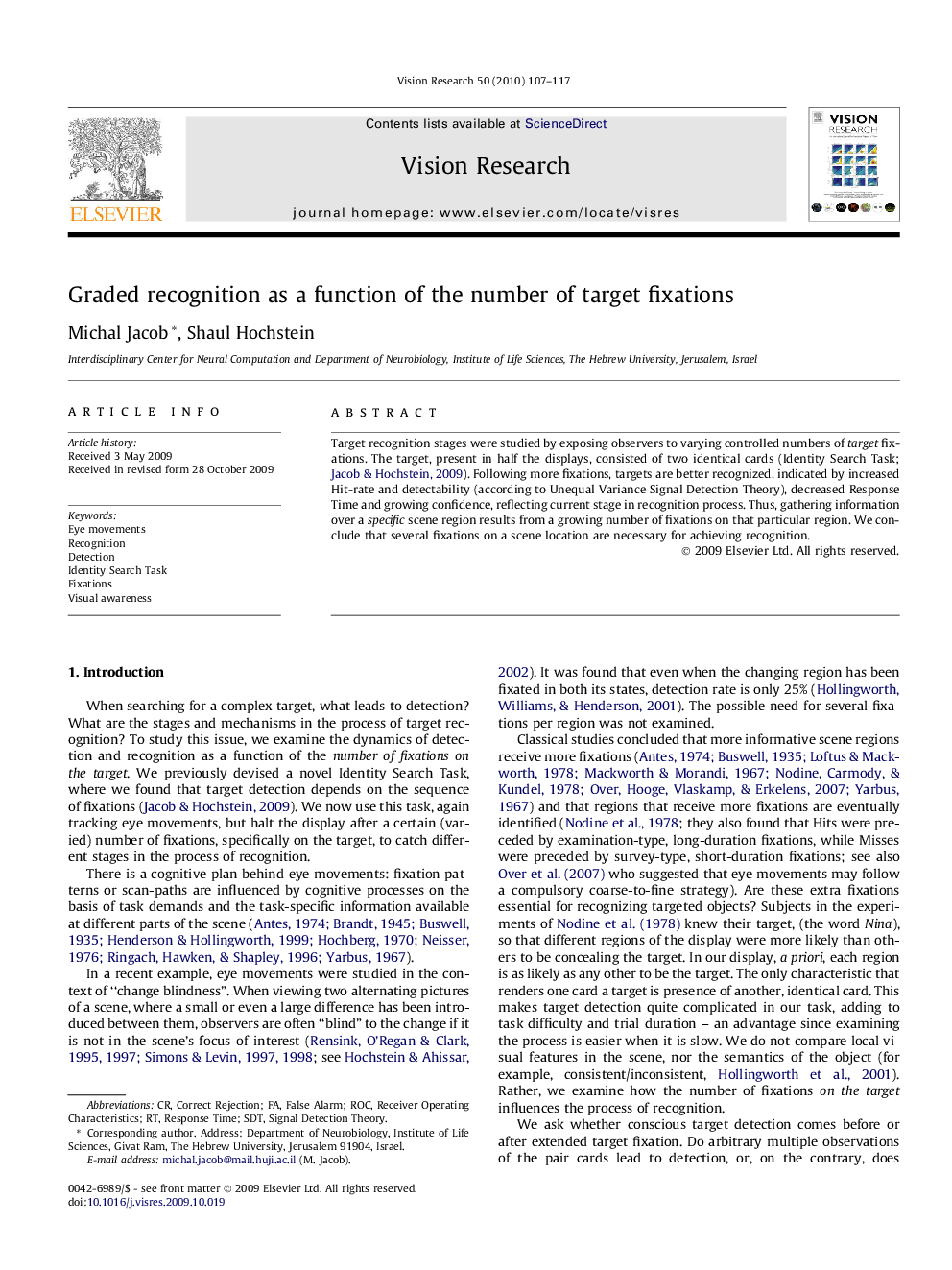| Article ID | Journal | Published Year | Pages | File Type |
|---|---|---|---|---|
| 4034594 | Vision Research | 2010 | 11 Pages |
Abstract
Target recognition stages were studied by exposing observers to varying controlled numbers of target fixations. The target, present in half the displays, consisted of two identical cards (Identity Search Task; Jacob & Hochstein, 2009). Following more fixations, targets are better recognized, indicated by increased Hit-rate and detectability (according to Unequal Variance Signal Detection Theory), decreased Response Time and growing confidence, reflecting current stage in recognition process. Thus, gathering information over a specific scene region results from a growing number of fixations on that particular region. We conclude that several fixations on a scene location are necessary for achieving recognition.
Keywords
Related Topics
Life Sciences
Neuroscience
Sensory Systems
Authors
Michal Jacob, Shaul Hochstein,
